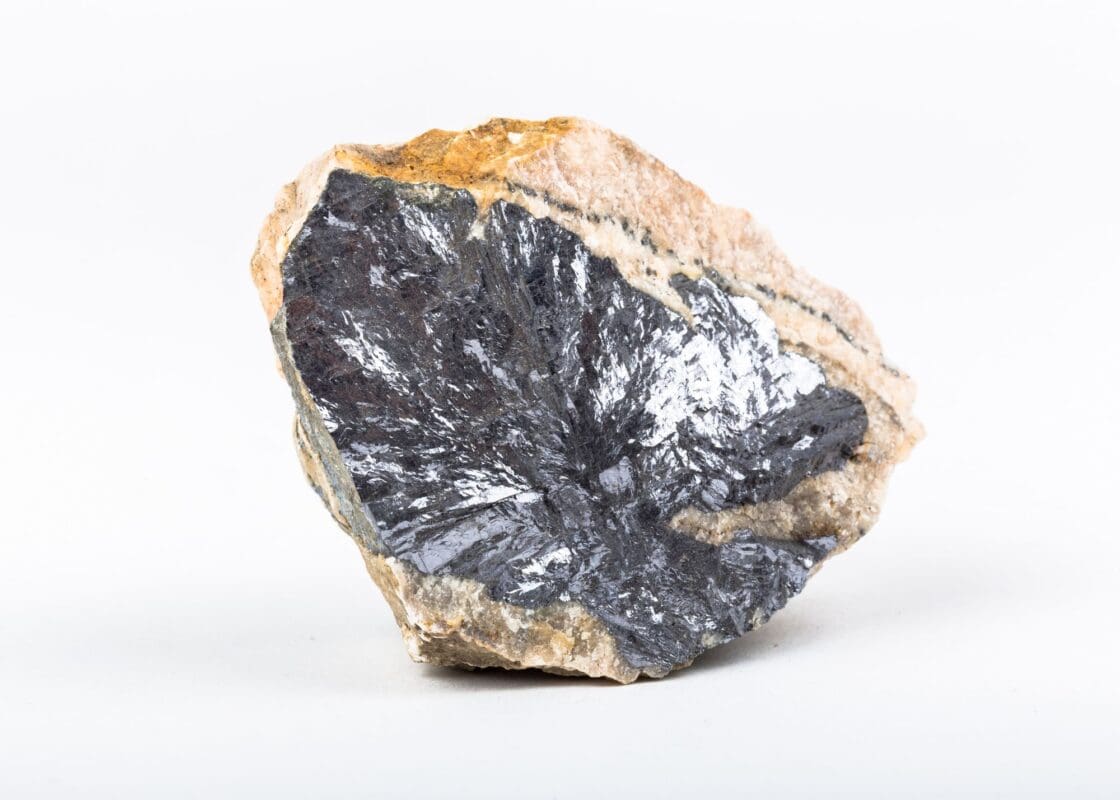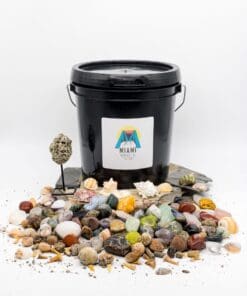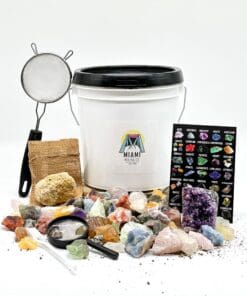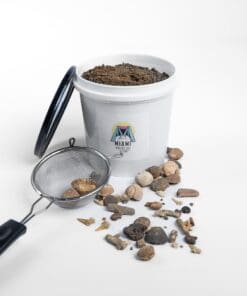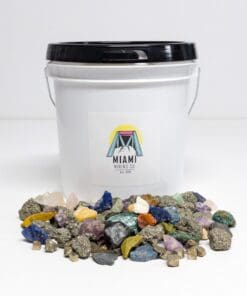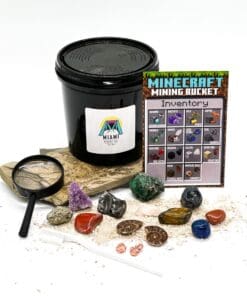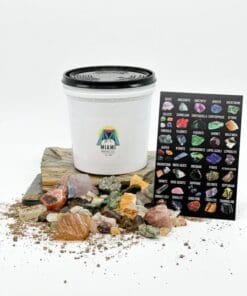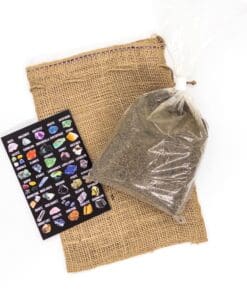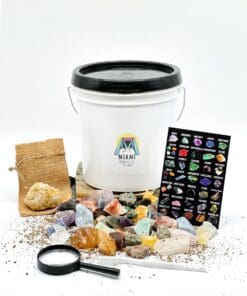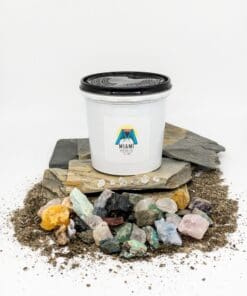The Ultimate Guide to Gem Mining in Iowa: Unearthed Wonders
Iowa, known as the “Hawkeye State,” is not only famous for its cornfields and state fairs but also for its rich geological treasures. Gem mining in Iowa provides a unique experience for both residents and visitors alike, offering a blend of adventure, education, and the thrill of discovery. This article delves deep into the earth’s crust to unearth the best gem mining spots in Iowa, shining a light on the state’s sparkling history, prominent gemstones, and much more.
The Most Popular Gemstones in Iowa
Iowa, while perhaps not the first state that comes to mind when thinking about gemstones, is a treasure trove of geological wonders. The state’s geodes, in particular, can contain an array of both common and rare minerals. Here’s a detailed breakdown:
Rare Gemstones Found in Iowa

| Gemstone | Description |
|---|---|
| Blue Chalcedony | A translucent, milky-blue variety of quartz, sought after for its soft color and smooth texture. |
| Sphalerite | Often found in small quantities in geodes, it’s a mineral that can range from yellow to brown to black, known for its brilliant resinous luster. |
| Galena | A lead ore, galena in geodes is usually seen as bright silver, cubic crystals. |
| Celestite | Known for its sky-blue crystals, celestite is a mineral that can occasionally be found in Iowa geodes, providing a beautiful contrast to the more common quartz. |
| Millerite | A rare nickel sulfide mineral, millerite appears as slender, hair-like crystals within some geodes. |
Common Gemstones Found in Iowa
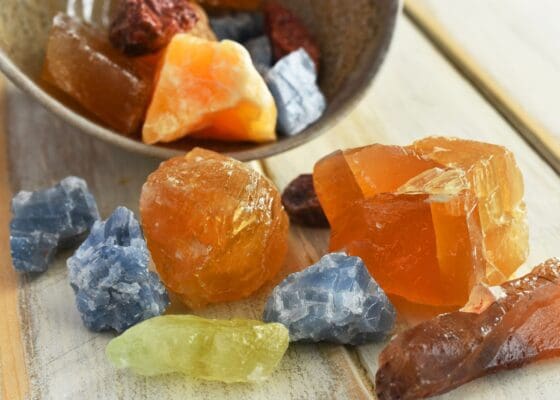
| Gemstone | Description |
|---|---|
| Quartz | The most common mineral inside geodes, quartz can range from clear to milky to smoky. |
| Calcite | Often seen as clear or white formations, calcite can also come in shades of yellow, blue, and orange. |
| Pyrite | Also known as “fool’s gold”, pyrite can be found as tiny, glittering crystals or as larger cubic formations. |
| Marcasite | A close relative of pyrite, marcasite has a similar metallic luster but often forms in more delicate and intricate shapes. |
| Barite | Sometimes found in geodes as clear to white tabular crystals. |
| Dolomite | Often appears as small, rhombohedral crystals lining the inner walls of geodes. |
| Goethite | A brown iron oxide mineral, goethite can be found in botryoidal (grape-like) formations or as fine, needle-like crystals. |
| Chalcedony | Apart from its blue variety, chalcedony can also appear as white, gray, or tan layers coating the inner surfaces of geodes. |
| Hematite | This iron oxide mineral can sometimes be found in geodes as shiny, silvery to black layers or small crystals. |
| Strontianite | A rare carbonate mineral, strontianite in geodes appears as slender, white to colorless needle-like crystals. |
These minerals, both common and rare, make each geode found in Iowa a unique and exciting discovery. Whether you’re a seasoned collector or just starting out, the thrill of cracking open a geode to reveal its hidden interior never gets old.
Top Gem Mining Locations in Iowa

- Geode State Park, Danville: Perhaps the most famous gem mining location in Iowa, this park boasts an area specifically for geode hunting. Situated near Danville, the park operates from sunrise to sunset. While there’s no fee for collecting, there’s a limit on the number of geodes you can take.
- Keokuk Area: Nestled in the Mississippi River Valley near Keokuk, this region is a prime location for geode hunting. The area is renowned for producing geodes with exceptional quality interiors. Various collecting sites are available, some of which may charge a small fee.
- Jacob’s Geode Shop and Mine, Hamilton: Located near the Mississippi River, this site offers geode collecting for a fee. The shop provides tools and guidance, and operates typically from 9 am to 6 pm.
- McGrew’s Geode Mine, Hamilton: A favorite spot for many, McGrew’s offers both geode mining and purchase opportunities. They’re open usually from 8 am to dark, and there’s a fee based on the volume of geodes you collect.
- Sheffler’s Rock Shop and Geode Mine, Alexandria: Situated northeast of Keokuk, Sheffler’s is both a shop and a mining site. For a set fee, visitors can dig and keep all the geodes they find. Their hours vary by season, so it’s wise to call ahead.
- Clark’s Geode Mine, Wayland: This family-run location is known for its abundant geode finds. There’s a fee based on the weight of the geodes you collect. It’s usually open from 8 am to 7 pm.
- Mason’s Geode Mine, Keokuk: Another spot near Keokuk, Mason’s offers a fee-based geode hunting experience. Open seasonally, its hours often range from 8 am to 5 pm.
- St. Francisville’s Geode Site, St. Francisville: A well-known location for geode enthusiasts, it offers a pay-to-dig experience. Open mainly during daylight hours, there may be some seasonal variations.
- Rodeo Park, Fort Madison: While primarily a recreational park, it’s also a known spot to find geodes in the creek bed. While the park is free to access, you should always respect the natural environment and avoid over-collecting.
- Sutcliffe Geode Site, Farmington: This site is open to the public for geode hunting for a nominal fee. It’s especially popular during weekends and operates during daylight hours.
Each of these sites offers its own unique experience and potential for discovering Iowa’s geological treasures. It’s always a good idea to check with individual sites ahead of time for the most current operating hours and any restrictions. Happy hunting!
History of Gem Mining in Iowa
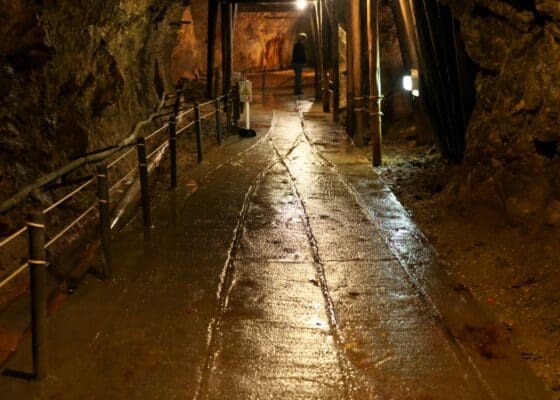
Iowa’s relationship with gemstones, particularly geodes, is rooted deeply in its geologic past, tracing back hundreds of millions of years. As the landscape of North America evolved, the conditions that favored the formation of geodes began to emerge in what is now the Hawkeye State.
The ancient seas that once covered Iowa played a pivotal role in geode formation. Over time, mineral-rich waters filled hollow cavities in the limestone bedrock, and through gradual processes of precipitation, layers of minerals solidified into the mesmerizing crystal structures that we seek today.
Local Native American tribes were the first to recognize the value of these enigmatic stones. To them, geodes were more than just pretty rocks; they were tools, ceremonial items, and sometimes even talismans believed to hold spiritual significance. Some tribes viewed geodes as a symbol of the earth’s mysterious power, while others used them in rituals, believing them to contain healing energies.
As European settlers arrived and began to colonize the Midwest, the allure of geodes spread. By the 19th century, as the nation experienced a broader mineral rush, geode hunting in Iowa began to transform from a practice grounded in utility and spirituality to one of recreation and commerce. Locals and visitors would flock to the river valleys, especially the Mississippi, driven by stories of geodes the size of basketballs filled with clear quartz crystals, blue chalcedony, and even rarer minerals.
In the town of Keokuk, situated at the confluence of the Mississippi and Des Moines rivers, a particular interest in geodes burgeoned. The so-called “Keokuk geodes” became famous not just within the state but also among national and international collectors, earning the region a nickname as the “Geode Capital of the World.”
Today, geode hunting remains a beloved pastime in Iowa. Annual events, like the Geode Fest, draw enthusiasts from all over, eager to share stories, showcase finds, and of course, embark on geode-hunting expeditions. The legacy of geodes in Iowa is not just about beautiful crystals; it’s a testament to the state’s rich geological history and the enduring human fascination with nature’s hidden treasures.
Gem Mining Regulations in Iowa

Gem mining, particularly geode hunting, has long been woven into the fabric of Iowa’s outdoor recreational culture. Given the popularity and the potential environmental impact, the state has set forth regulations to ensure sustainable practices and protect its natural resources.
- Land Ownership and Permissions: One of the cardinal rules in gem mining across states is always to seek permission before entering private property. In Iowa, many of the best geode-collecting sites are on private lands. Prospective hunters are required to obtain explicit permission from landowners before accessing and mining these sites. Trespassing not only poses legal repercussions but can also tarnish the reputation of the gem hunting community.
- Collection Limits: While Iowa is liberal when it comes to individual geode collectors, there are limits in place, especially in state parks. For instance, at the Geode State Park, collectors are limited to a specific number of geodes per visit. This limit ensures that there are enough geodes for everyone and helps in preserving the geode-rich regions for future generations.
- Environmental Considerations: Alongside the excitement of discovery, there’s an ethical obligation to minimize environmental impact. Digging should be done responsibly. Collectors are encouraged to refill any holes they dig and ensure that the site remains as undisturbed as possible. Additionally, any waste or trash should be properly disposed of or packed out.
- Commercial Mining: For those interested in commercial mining or bulk collection for resale purposes, additional permits may be required. The state has different regulations for hobbyists versus commercial miners, and those looking to enter the commercial sphere should consult the Iowa Department of Natural Resources (DNR) for guidance.
- Safety and Responsibility: Beyond the environmental aspect, the state also emphasizes safety. Many geode sites are near water bodies or in rugged terrains. It’s paramount to be aware of potential hazards, including slippery rocks, steep inclines, and water currents. It’s always recommended to wear appropriate footwear, use safety gear, and preferably hunt in groups.
- Educational and Scientific Research: For educators and researchers interested in collecting geodes for study or educational purposes, it’s advisable to coordinate with the DNR. They often provide guidance and can sometimes grant special permissions or access to specific sites.
In summary, while Iowa remains a haven for geode enthusiasts, these regulations aim to strike a balance between recreational enjoyment and the conservation of its natural heritage. Adherence to these guidelines not only ensures the longevity of this hobby but also underscores a respect for the land, its history, and the treasures it holds.
Necessary Tools and Equipment for Gem Mining in Iowa
Embarking on a gem hunting expedition in Iowa, particularly when seeking geodes, requires preparation. While the tools needed aren’t particularly complex, having the right equipment can significantly enhance the experience, ensuring that you can both locate and safely extract these geological wonders. Let’s delve into the essential toolkit for an Iowa gem mining adventure:
1. Screening and Classifying Tools: Reveal those hidden treasures!
Description: Especially vital for riverbed or open-pit mining, these screens help separate the gemstones from the surrounding dirt and debris. Given the varied size of gemstones in Illinois, having screens of different mesh sizes can be beneficial.

🛒 Explore Top Screening Sets on Amazon
2. Shovels and Trowels: Digging deep or just scratching the surface?
Description: If you’re searching in riverbeds or gravel pits, these tools can help sift through larger volumes of material, increasing your chances of finding geodes or other gemstones.

🛒 Find Quality Shovels and Trowels on Amazon
3. Picks and Hammers: The backbone of any gem hunting endeavor.
Description: This is your primary tool for extracting geodes. A good geological hammer allows you to crack rocks and pries geodes from the earth. Ensure your hammer’s head is robust, and its handle is comfortable for prolonged use.

🛒 Check Out Best Picks and Hammers on Amazon
4. Buckets: Your trusted companion for carrying treasures.
Description: Once you’ve found your treasures, you’ll need somewhere to store them. A sturdy bucket can be beneficial for larger hauls. For individual, special finds, consider soft cloth bags or wraps to prevent them from scratching or chipping.

🛒 Shop for Reliable Buckets on Amazon
5. Magnifying Glass: Every detail counts!
Description: For the finer details that the naked eye might miss, a magnifying glass comes in handy. It’s particularly useful for inspecting and identifying smaller gemstones.

🛒 Grab Your Magnifying Glass on Amazon
6. Guidebooks and Field Guides: Knowledge at your fingertips.
Description: Especially for beginners, carrying a pocket-sized gem and mineral identification guide can enhance the experience. Not only does it assist in identifying your finds, but it also offers insight into the geology of the gems you encounter.

🛒 Discover the Best Field Guides on Amazon
7. Containers and Bags: Organize, store, and flaunt your finds.
Description: As you gather gemstones, having durable bags or buckets ensures safe storage. Labeling them based on location or type of stone can be helpful for post-trip analysis.

🛒 Shop for Storage Solutions on Amazon
8. First Aid Kit: Better safe than sorry!
Description: Accidents can happen, so it’s wise to have a basic first-aid kit on hand. This should include band-aids, antiseptic wipes, tweezers, and any personal medications.

🛒 Secure Your First Aid Kit on Amazon
In essence, preparing for a gem mining expedition in Iowa requires a blend of safety measures and specialized tools. Equipped correctly, you’ll not only maximize your chances of discovering beautiful geodes but also ensure a safe and enjoyable experience.
Tips and Tricks for Successful Gem Mining in Iowa

Embarking on a gem mining journey in Iowa, with its diverse geological formations and famed geode sites, is an adventure waiting to be undertaken. To make the most of this experience, here are some expert tips and tricks:
- Research the Area: Before heading out, study the location. Iowa has a plethora of sites, and understanding the terrain, accessibility, and the type of gems to expect can set the stage for a fruitful hunt. Consulting local geology clubs or online forums can provide invaluable insights.
- Time Your Visit: After spring rains is an ideal period for geode hunting. The rains can erode top layers of soil, revealing hidden treasures. However, be cautious of slippery conditions and swollen riverbanks.
- Cracking Geodes: Patience is key when opening a geode to ensure you don’t damage its interior. Place the geode in a sock or cloth bag, and lightly tap it with a hammer until it cracks. This method offers a more controlled break and prevents fragments from scattering.
- Look for Indicators: Geodes often have a round or oval shape and may feel heavier than ordinary rocks of similar size due to the crystals inside. A hollow sound when tapped can also be a good indicator.
- Stay Aware of Surroundings: When engrossed in the hunt, it’s easy to lose track of time and surroundings. Regularly check your bearings, especially if you’re in a large park or remote area, to avoid getting lost.
- Hydration and Nutrition: Gem hunting can be physically demanding. Ensure you carry sufficient water and energy-rich snacks. Staying hydrated and energized will keep you alert and make the experience more enjoyable.
- Document Your Finds: Take photos or notes of where you found specific gemstones. This not only aids in identifying patterns but also serves as a beautiful memory of your adventure.
- Respect the Land: Always practice the principle of ‘Leave No Trace’. Refill any holes you dig and dispose of trash properly. Maintaining the integrity of the environment ensures that gem hunting remains sustainable and enjoyable for all.
- Engage with the Community: Joining a local gem and mineral club can provide both camaraderie and expertise. Experienced members can offer guidance, and organized trips can enhance the experience.
- Stay Updated on Regulations: As gem hunting gains popularity, regulations can evolve. Regularly check for any updates, especially if revisiting a location after a gap.
In essence, gem mining in Iowa, while immensely rewarding, requires a mix of preparation, respect for the environment, and an adventurous spirit. With these tips in hand, you’re poised for a fruitful and memorable experience.
Handling Your Gemstone Finds
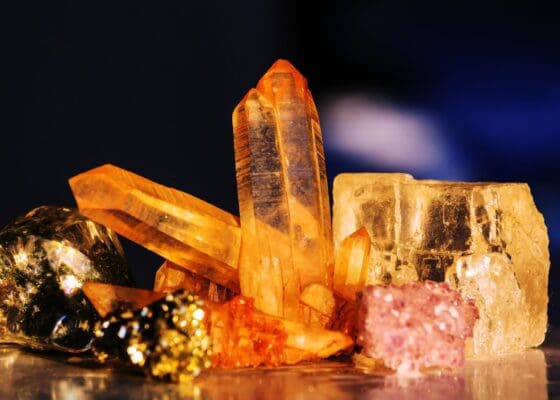
After a day spent in the embrace of nature, hunting for Iowa’s geological treasures, you’re likely to return with a trove of beautiful gemstones and geodes. However, the journey doesn’t end with the find. Properly handling, cleaning, and preserving your discoveries is essential to showcase their true beauty and protect them for years to come. Here’s a guide on managing your gemstone finds:
- Initial Cleaning: Remove any loose dirt or mud by gently rinsing your gemstones under lukewarm water. A soft brush, like a toothbrush, can help in cleaning crevices without scratching the surface.
- Advanced Cleaning for Geodes: If the inside of a geode has mud or clay deposits, soaking it in a solution of water and mild detergent for several hours can help. Gently brush the interior afterward and rinse thoroughly.
- Avoid Harsh Chemicals: Some gemstones can react adversely to strong chemicals, which may erode or discolor them. Always opt for gentle, natural cleaning agents and ensure you rinse the stones thoroughly.
- Documenting and Labeling: Especially if you’re building a collection, label each gemstone with details like the date of find, location, and any unique characteristics. This not only aids in organization but also adds a historical context to each piece.
- Storage: Store your gemstones in a cool, dry place. Individual soft pouches or padded gem containers can prevent scratches and damage. Humidity can be detrimental to some stones, so consider using silica gel packets if you’re storing them in a closed container.
- Display: If you wish to showcase your finds, shadow boxes or glass-fronted display cases work wonderfully. Ensure the display area is away from direct sunlight, as prolonged exposure can fade some gemstones.
- Identification: While the thrill of discovery is unmatched, knowing precisely what you’ve found adds another layer of satisfaction. Consider investing in a gemstone identification book or consulting with a local gemologist.
- Valuation: If you believe you’ve stumbled upon a particularly valuable find, get it appraised. Certified gemologists can provide an accurate valuation and even help in certifying its authenticity.
- Handling: When showing or examining your gemstones, handle them with clean hands. Oils and dirt from skin can dull their surfaces over time.
- Seek Expertise for Rare Finds: If you discover a gemstone or geode that seems particularly unique, consult an expert before attempting to clean or alter it. Some rare specimens might require specialized care.
In summary, the care you invest after discovery ensures that the beauty of your Iowa gemstones remains untarnished, providing joy and wonder for many years to come.
Famous Gemstone Finds in Iowa
Iowa, with its rich geological history, has been the site of numerous notable gemstone discoveries over the years. These findings not only intrigue mineral enthusiasts but also highlight the state’s unique place in the annals of American gemstone lore. Let’s journey through some of the most celebrated gemstone discoveries in Iowa:
- The Giant Keokuk Geode: Found near the southeastern town of Keokuk, this geode, weighing several hundred pounds, remains one of the largest ever discovered in the area. Its interior sparkles with an intricate array of quartz crystals, showcasing nature’s artistic prowess.
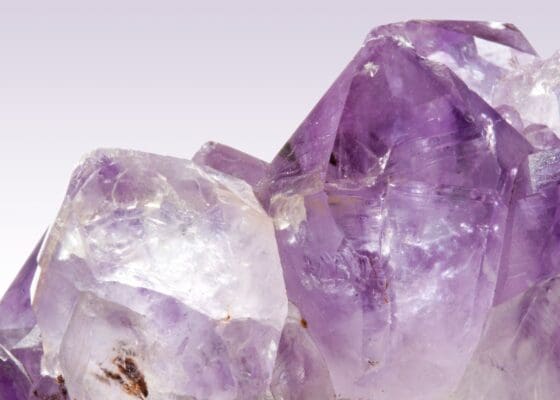
- Mystical Amethyst Find: In the early 20th century, a farmer in eastern Iowa unearthed a geode brimming with deep purple amethyst crystals. While amethyst is not the most common find in Iowa, this particular specimen was noteworthy for its size and intense coloration.
- Calcite Crystal Clusters: North of Dubuque, a mining enthusiast discovered an astonishing array of golden calcite crystals formed in distinct clusters. The symmetry and brilliance of this find made it a centerpiece in a regional gem exhibition.
- The Spirit Lake Diamond: While diamonds aren’t typically associated with Iowa, there have been isolated reports of diamond discoveries. One such gem, known as the Spirit Lake Diamond, was found in the northwest region and remains a testament to Iowa’s geological surprises.
- Fossilized Coral Gems: Iowa’s ancient seas have left behind remnants in the form of fossilized corals. A particularly well-preserved specimen was discovered near Iowa City, providing a glimpse into the state’s marine past and offering a unique gemstone variety.
- Rare Celestine Discovery: Near the banks of the Mississippi, a gem hunter stumbled upon a cluster of celestine crystals, a rarity for Iowa. Its soft blue hue and crystalline structure made it a significant find in the state’s mineralogical records.
- The Des Moines Jasper: In central Iowa, a unique type of jasper was discovered, later dubbed the Des Moines Jasper due to its proximity to the state’s capital. Characterized by its intricate patterns and colors, this stone is a testament to Iowa’s varied mineral deposits.
- Historic Agate Beds: While not a singular find, the historic agate beds of western Iowa have yielded numerous beautiful specimens over the decades, each unique in its banding and coloration.
These renowned discoveries underscore Iowa’s diverse geological offerings. While the state may be best known for its geodes, its depths hide a myriad of treasures, waiting for the next fortunate gem hunter to unearth and share with the world.
Additional Gem Mining Opportunities
Venturing beyond Iowa’s borders, gem enthusiasts will find a treasure trove of opportunities in neighboring states. Each state brings its unique geological backdrop and presents mineralogists and hobbyists with a new set of challenges and rewards. Here’s a brief overview of what awaits in the adjoining states:
- Minnesota Gem Mining: Beyond its ten thousand lakes, Minnesota boasts Lake Superior agates, famed for their rich red, orange, and yellow banding. These agates are sought-after and can be found mainly in the northeastern parts of the state.
- Wisconsin Gem Mining: This state is renowned for its deposits of quartz and various types of agates. Additionally, the shores of Lake Superior present opportunities to find beautiful beach-washed jaspers.
- Illinois Gem Mining: Adjacent to Iowa, Illinois is another haven for geode enthusiasts. The southern parts of the state also contain fluorite mines that have produced vibrant, multi-colored specimens.
- Missouri Gem Mining: To the south, Missouri offers diverse mineral finds, with the Ozark region being particularly rich in deposits. The state is known for its galena, calcite, and druzy quartz.
- Nebraska Gem Mining: While not as gem-rich as some of its neighbors, Nebraska still presents opportunities, especially for those interested in fossilized remains and fairburn agates, which are particularly sought after.
- South Dakota Gem Mining: A bit further afield, South Dakota is famous for its Black Hills Gold and the stunningly beautiful Fairburn agates, characterized by their intricate designs and bright colors.
For those with a passion for gem hunting, the heartland of America, with Iowa at its center, offers a diverse range of geological wonders. Each state provides a unique backdrop and a fresh adventure for those keen to explore its depths.
From locations to tips, everything you need to know about gem mining is in our Gem Mining Near Me guide.
The Allure of Iowa Gem Adventures & At-Home Alternatives
Gem hunting in Iowa is more than just a quest for shiny treasures; it’s a communion with nature, a glimpse into our planet’s history, and a hands-on lesson in geology. The state’s unique geological formations, particularly its renowned geodes, beckon enthusiasts from all over. Each outing is filled with anticipation, where every stone turned could be a window to an unseen sparkling world. Yet, for those who might not be able to venture into Iowa’s outdoors or those who wish to experience the joy of discovery in the comfort of their homes, there’s a fantastic alternative: the Gem Mining Kit.
This comprehensive kit brings the thrill of gem hunting to your doorstep. Filled with a variety of mineral-rich sand and gravel, every sift and wash promises potential treasures. It’s an engaging way to introduce young minds to the wonders of geology or to satiate the gem enthusiast’s thirst for discovery between trips. In essence, whether you’re exploring the vast landscapes of Iowa or delving into a mining kit at home, the magic of unearthing nature’s hidden jewels remains undiminished.

